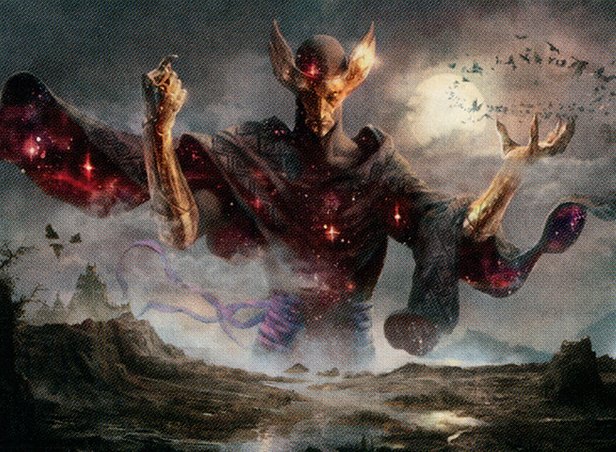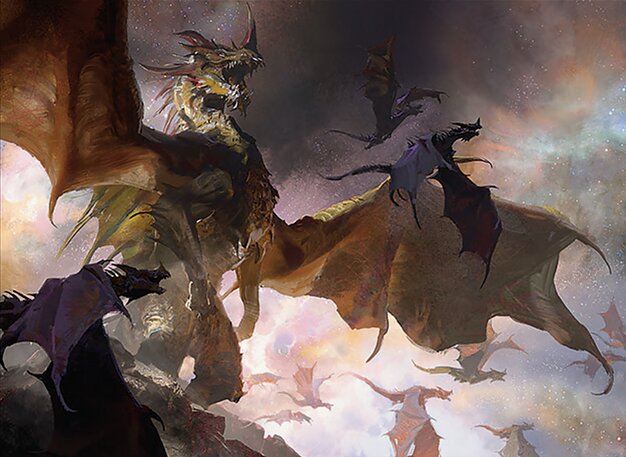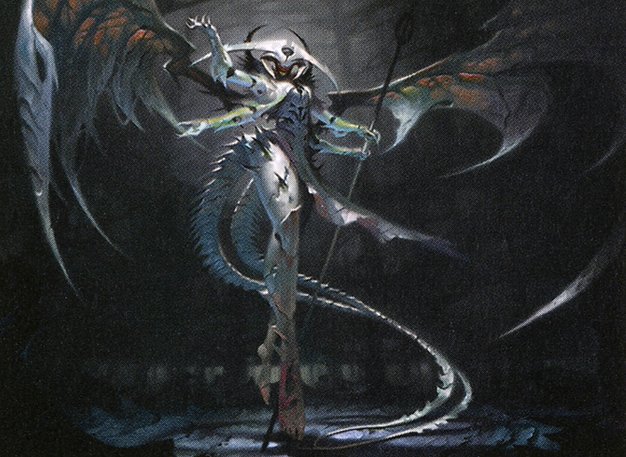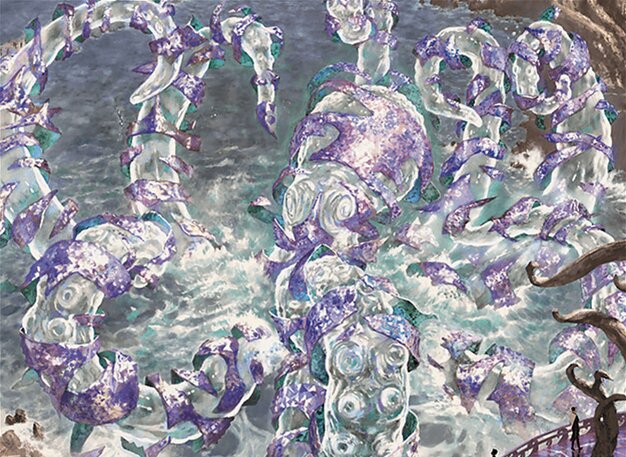Deck & Commander Strategies

Phenax, God of Deception
Focuses on milling opponents' libraries by tapping creatures to mill cards, leveraging self-mill synergies and graveyard interactions to generate card advantage and eventually win by decking out opponents.

The Ur-Dragon
Ramp heavily to cast large, powerful dragon creatures quickly, then use their combat prowess to overwhelm opponents and win through damage.

Atraxa, Praetors' Voice
A resilient midrange enchantress-style deck that focuses on enchantments and board control to stabilize the game and outlast opponents through incremental advantage and defense.

Octavia, Living Thesis
A political and combat-focused deck that manipulates combat phases by turning creatures into flying threats and using political interactions to influence other players, aiming to control the board and win through advantageous combat outcomes.
Gameplay Insights
- 1
The Ur-Dragon player prioritized ramping quickly to deploy massive dragons, forcing opponents to respond defensively early in the game.
- 2
Octavia’s political combat manipulation effectively turned the tide by creating flying threats and influencing combat phases to protect key creatures.
- 3
Phenax’s milling strategy applied steady pressure that synergized well with graveyard interactions and threatened a win condition through decking opponents.
- 4
Atraxa’s midrange enchantress approach provided resilience and defensive options, helping to balance the aggressive impulses of the other decks.
- 5
Players recognized the importance of managing both board presence and political interactions to navigate the multi-threat environment effectively.
Notable Cards
-

Phenax, God of Deception
-

The Ur-Dragon
-

Octavia, Living Thesis
-

Atraxa, Praetors' Voice
-

Ghostly Prison
-

Swords to Plowshares
Gameplay Summary
The game features a four-player Commander match with decks led by Phenax, God of Deception; The Ur-Dragon; Atraxa, Praetors' Voice; and Octavia, Living Thesis.
The Ur-Dragon deck focused on ramping quickly to cast large, impactful dragon creatures, aiming to dominate the board through powerful attacks.
Octavia's deck leveraged political combat strategies, manipulating creatures and using their abilities to control the flow of combat and influence opponents' decisions.
Phenax's deck utilized milling strategies and self-mill synergies to drain opponents' decks and generate advantage through graveyard interactions.
Atraxa's deck was an enchantress-style build with a midrange approach, emphasizing resilience and control elements to stabilize the board and outlast opponents.
Early turns saw Ur-Dragon ramping aggressively to deploy massive dragons, forcing opponents to respond or risk losing significant life.
Octavia played a pivotal role in diplomatic and combat phases, turning creatures into flying threats and leveraging political interactions to sway the game state.
Phenax steadily chipped away at opponents' libraries, applying pressure through milling effects that threatened to win via decking out.
Atraxa provided continuous board presence and defensive options, helping to balance the game's pace.
The turning point arose when Octavia successfully manipulated combat engagements to mitigate Ur-Dragon's aggression, while Phenax's milling combined with Atraxa's defensive strategies created a multi-layered threat landscape that required careful navigation by all players.
The game concluded as a result of the interplay between large flying threats, political combat manipulation, and incremental milling pressure, showcasing the distinct strategies of each commander.

























![Klothys Aggro vs. Octavia Control [Duel Commander-EDH] - Magic: The Gathering thumbnail](https://i.ytimg.com/vi/aWeTU_VdMjo/sddefault.jpg)
![Galazeth Control vs. Octavia Control [Duel Commander-EDH] - Magic: The Gathering thumbnail](https://i.ytimg.com/vi/tMHtBX20uhQ/sddefault.jpg)










